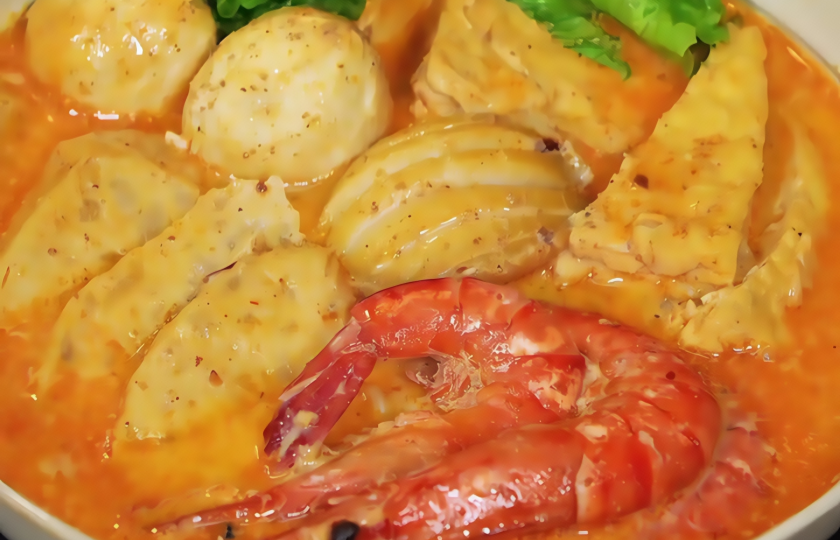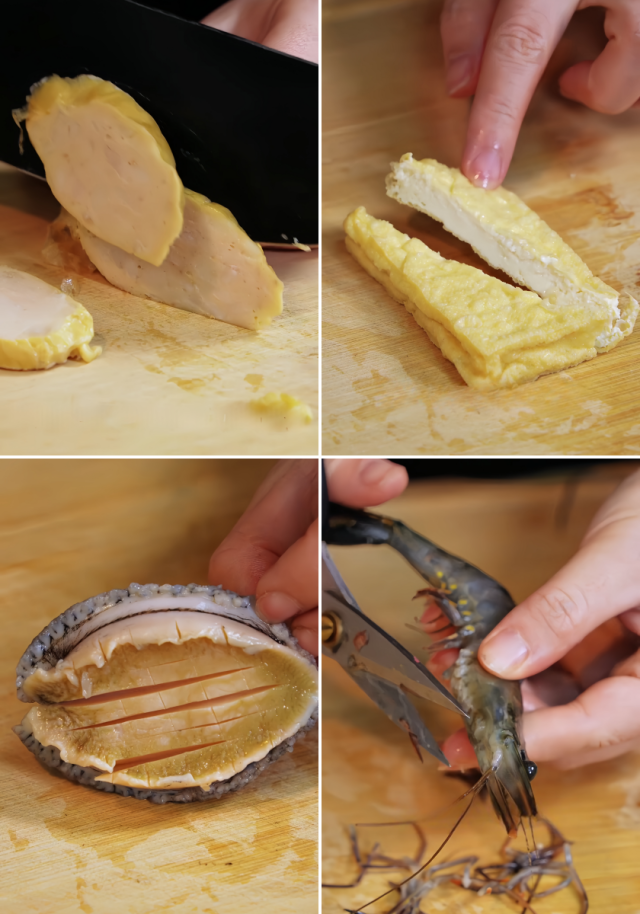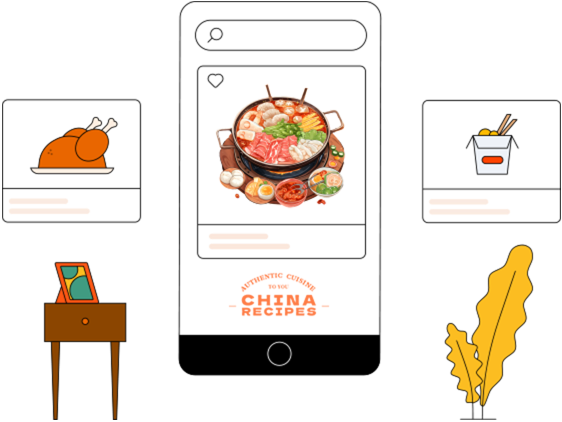Fujian-style Satay Noodles

While many regions have their own version of satay noodles, the Fujian interpretation stands out for its complex spice blend and distinctive local ingredients.
What is Satay Noodles?
Satay noodles are a classic snack in Xiamen, Fujian, renowned for their rich satay soup base and a variety of toppings.
The essence of satay noodles lies in the satay sauce, which is a thick sauce made from peanuts, garlic, coconut milk, dried fish, etc. It has a mellow flavor with a hint of spiciness.
The soup base of satay noodles is usually simmered with satay sauce, peanut butter, milk, and stock, resulting in a thick, smooth texture.
The noodles can be paired with a wide range of ingredients, such as meat rolls, seafood, tofu, vegetables, etc. Finally, pour the soup over the cooked alkaline noodles and mix well before enjoying.
The whole bowl of noodles offers a diverse range of textures and tastes, being savory with a touch of sweetness.

Where does Satay Sauce come from?
Satay sauce initially originated in Southeast Asia and later made its way to Fujian and Chaoshan. Gradually, it evolved into a local specialty condiment.
It differs from Indonesian satay sauce. Fujian satay sauce mainly uses peanuts, dried fish, garlic cloves, coconut milk, etc. as its main ingredients. It tastes saltier, mellower, and has a distinct seafood flavor.
In Xiamen, satay sauce is not only used for mixing with noodles but also commonly used in hot pots, barbecues, stir-fries, etc. It's almost an all-purpose seasoning.
It's precisely this soup base rich in satay aroma that makes satay noodles a genuine Fujian delicacy!
Ingredients Explanation
Satay Sauce: It is recommended to choose products from Chaoshan or Fujian. Those containing dried pomfret are more authentic.
Peanut Butter: Opt for the sugar-free and smooth type to prevent the sweetness from interfering with the soup base. If using the chunky type, sift it before use.
Whole Milk: Replacing traditional coconut milk, it makes the soup clearer and less greasy. It's normal for a skin to form on the surface after refrigeration.
Spicy Oil: The scallion-flavored one is the best. It enhances the color without overpowering the flavor. If you don't eat spicy food, you can make it by mixing sesame oil and half a spoon of chili powder.
Meat Rolls: They are great at absorbing the sauce. You can also use sliced luncheon meat.
Fresh Shrimp: Cooking with the shells on makes the soup fresher, but peeling them is more convenient for eating. Frozen shrimp should be thawed in advance.
Abalone/Tofu: For soft tofu, fry it until shaped to prevent it from breaking. Just cut firm tofu into pieces directly. Making cross-cuts on abalone can make it more flavorful.
Alkaline Noodles: They can withstand soaking and are less likely to stick together. If replacing with udon noodles, reduce the cooking time to 1 minute.
Minced Garlic: It is the key to making the dish fragrant. After the oil is heated, fry it until slightly yellow and then immediately turn to low heat to avoid bitterness.
Side Dishes: Heat-resistant vegetables such as lettuce and baby bok choy are recommended. Leafy greens can be blanched at the end.
Seasoning: Use less salt and sugar as the satay sauce itself is salty. You can replace chicken essence with half a spoon of dried shiitake mushroom powder.
INGREDIENTS
Main Ingredients
-
·200g alkaline noodles (or hand-made noodles)
Additional Ingredients
-
·100g sliced meat rolls
-
·150g cubed tofu
-
·2 abalones (cut in cross-hatch pattern)
-
·4 large shrimps (with antennae trimmed)
-
·15g minced garlic
Seasonings
-
·30g satay sauce (2 tablespoons)
-
·15g peanut butter (1 tablespoon)
-
·200ml milk
-
·30ml spicy oil (2 tablespoons)
-
·3g salt
-
·5g white sugar
-
·2g chicken essence
COOKING STEP
Step 1
First, slice the meat rolls, cube the tofu, make cross-cuts on the abalones, and trim the antennae of the large shrimps.

Step 2
Pour 20ml cooking oil into a pot. When the oil is hot, add 15g minced garlic and sauté until fragrant.

Step 3
Turn to low heat and add 30g satay sauce and 15g peanut butter. Stir-fry until the sauce aroma is strong (about 1 minute).

Step 4
Pour in 200ml milk, 200ml water and 30ml spicy oil, and let the seasonings blend well.

Step 5
Bring to a boil over high heat, then add 3g salt, 5g white sugar and 2g chicken essence for seasoning. Thus the satay soup base is ready.

Step 6
Put all the sliced meat rolls, cubed tofu, abalones and large shrimps into the pot and cook for 3-5 minutes over medium heat until the ingredients are cooked through.

Step 7
Bring some water to a boil in a separate pot. After the water is boiling, add the alkaline noodles and cook for 2-3 minutes until they are chewy. Then put the noodles in a bowl.

Step 8
Pour the cooked side dishes and soup over the noodles, quickly toss well, transfer to a plate and serve hot.

More recipes worth trying
Zha Jiang Mian(Beijing-style Noodles 炸酱面)
Delicious Glass Noodles with Braised Pork Ribs Recipe
Exquisite Steamed Shrimp with Vermicelli Recipe
Tips and Tricks
Selection of Satay Sauce: Choose an authentic Fujian satay sauce, which will have a stronger flavor and is less likely to be too sour or sweet. You can adjust the ratio of satay sauce to peanut butter according to your personal taste.
Ratio of Milk and Spicy Oil: Milk makes the soup base smoother, while spicy oil adds aroma and color. You can adjust them according to your preference. If you prefer a richer flavor, you can appropriately increase the amount of spicy oil.
Cooking Heat for Side Dishes: When cooking the side dishes, make sure to use medium heat and don't overcook them, as this can affect the texture of the ingredients. Shrimp and abalone should be cooked for a relatively short time to keep them tender.
Choice of Noodles: Using alkaline noodles is crucial. Alkaline noodles are chewy and elastic when cooked, making them a better match for the rich flavor of satay sauce. After cooking the noodles, gently lift them out and drain the water to prevent them from becoming too soft.
Combination Suggestions: In addition to the traditional side dishes, you can also try adding some mushrooms, greens, or kelp shreds to enhance the texture.
Final Stirring: When pouring the cooked side dishes and soup base over the noodles, quickly stir them evenly so that each noodle is soaked in the satay soup. Keep the soup base warm, as the noodles will taste better when stirred this way.
Variations
You can use this as a base and then make changes according to your own preferences. Here are just some suggestions:
Satay Rice in Soup: Don't like noodles? Pairing the soup base with rice is even better for warming your stomach! Pour the cooked satay soup over hot rice, top it with ingredients, and it instantly becomes satay rice in soup.
Dry-mixed Satay Noodles: Omit the soup base and use a sauce made from satay sauce, peanut butter, and milk to mix with noodles and make dry-mixed noodles. They taste richer and are suitable for people who prefer stronger flavors.
Satay Beef Noodles: Replace the ingredients with thin slices of beef, add an appropriate amount of light soy sauce, minced garlic, and scallions to make satay beef noodles, which have an even stronger aroma.
Seafood Satay Noodles: If you don't like meat, you can use more seafood, such as clams, scallops, crab meat, etc. The freshness of the seafood complements the satay sauce, bringing another fresh flavor.
How to Store?
Storage Suggestions
Leftover Soup Base: After the remaining satay soup base has cooled down, put it in a sealed container and refrigerate. It can be stored for about 2 - 3 days.
Side Dishes: If there are leftover side dishes (meat, tofu, seafood, etc.), they can also be stored separately in sealed containers in the refrigerator. It's best to eat tofu and seafood within 1 - 2 days while refrigerated to avoid texture changes.
Cooked Noodles: Cooked alkaline noodles are not very suitable for long-term storage as they will become soft. If there are leftovers, after cooling the cooked noodles, put them in a sealed bag or container and store them in the refrigerator. It's best to consume them as soon as possible.
Reheating Suggestions
The soup base can be reheated over low heat. Add a little water or milk to adjust the consistency.
It's best to reheat the side dishes and noodles separately. The side dishes can be reheated in a microwave or stir-fried over low heat. The noodles can be cooked a little longer or blanched in hot water.
FAQs:
If you make a substitution, the overall flavor will be very different. It is recommended to stick with satay sauce!
You can try according to your personal preference, but it is still recommended to use alkaline noodles to experience the original flavor.
So I prefer to reheat them on the stove and add a little water (or soup) to make the noodles soft again. But you can also use the microwave, just add a little liquid when heating.

















